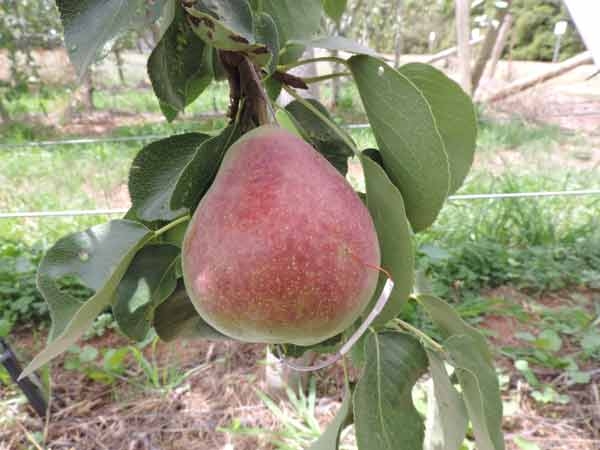It is important to know which genetic and environmental factors regulate production of red pigments, or anthocyanins, in the skin of full red and blush cultivars of European pear.
Insufficient red colour can reduce consumer appeal and profitability of production.
In apple the process of red colour development is relatively well understood but for pears, much less is known.
Development of red colour due to anthocyanin accumulation during fruit ripening is controlled by complex interactions between genetic and environmental factors.
Light, temperature, carbohydrates, water stress and hormones all play a role but anthocyanin synthesis depends primarily on light.
Biosynthesis of anthocyanins in plant tissues either requires or is enhanced by solar radiation (i.e. sunlight) with intensity and wavelength key elements.
In general, higher solar radiation tends to increase flavonoid content in most fruit types. It appears that shorter wavelengths, in the range of blue and ultraviolet (UV), show the most prominent effects in accumulation of anthocyanins. However, specific information on responses to different light wavelengths is still scarce.
Pears display an unusual anthocyanin accumulation
In most fruit types such as apples, maximum colour is attained in ripe fruit. However, Steyn et al. (2005) found that the skin of some red and blushed pear cultivars displays an unusual anthocyanin accumulation pattern which involves attainment of maximum anthocyanin concentrations about midway between anthesis and harvest, with a slow decrease in synthesis and colour thereafter.
With this pattern, highest anthocyanin content generally occurs in immature pears a month or more before harvest and colour tends to fade towards harvest.
This accumulation pattern is reported for full red cultivars Red d’Anjou and Bon Rouge and for blush cultivars Flamingo, Forelle and Rosemarie.
A lack of research on pears in recent years means that it is unclear whether the pattern is typical for the majority of coloured pears, many of which have been recently developed and released.
Regardless of whether this pattern of red colour development is typical, the amount of blush on fruit at harvest is highly influenced by the maximum anthocyanin concentration that can be reached and the extent of subsequent colour fading (Steyn et al. 2004b).
Colour fading
This means that despite reductions in anthocyanin concentration attributable to fading, fruit containing a high anthocyanin concentration change little in appearance before harvest.
In contrast, fruit with little red colour development rapidly lose redness and become yellow/green under conditions favouring anthocyanin degradation, particularly when exposed to high temperatures.
Van den Ende (2011) notes that under Australian growing conditions, redder Forelle fruitlets with high concentrations of pigment, change colour more slowly during hot weather than do fruitlets with less red pigment.
Effects of temperature
Typically low temperatures induce red development in many fruit types while high temperatures are generally associated with poor red colour development.
For apples, red colour development in all cultivars seems to require or benefit from low temperatures but not all red and blush pear cultivars respond to low temperatures.
(continued next issue)
See this article in Tree Fruit Nov 2015






















